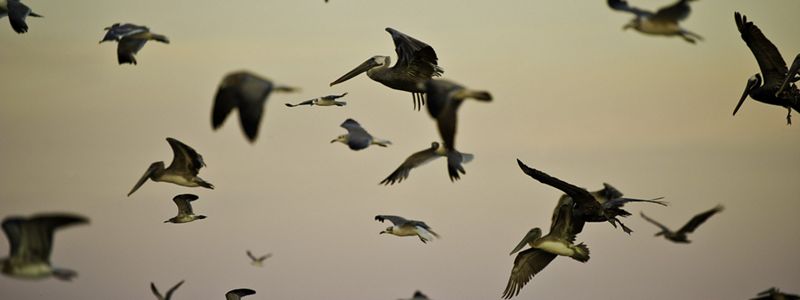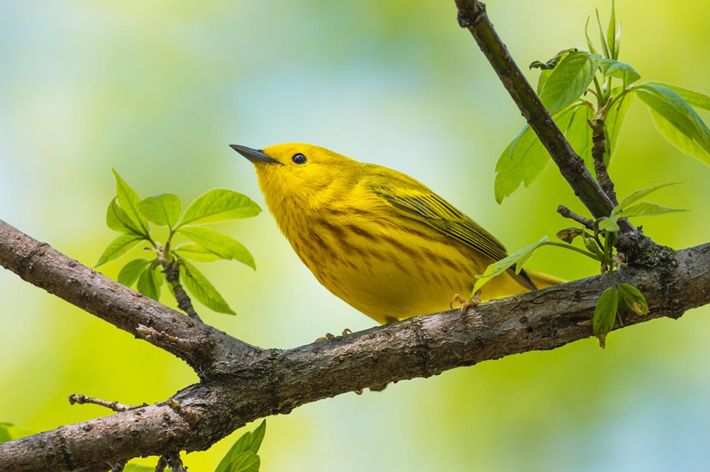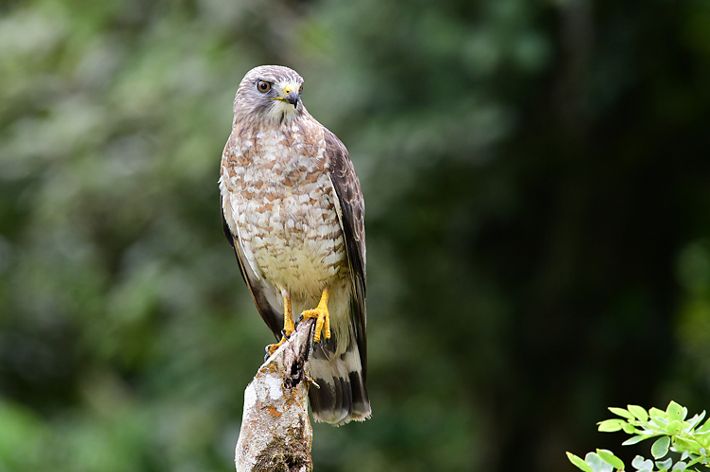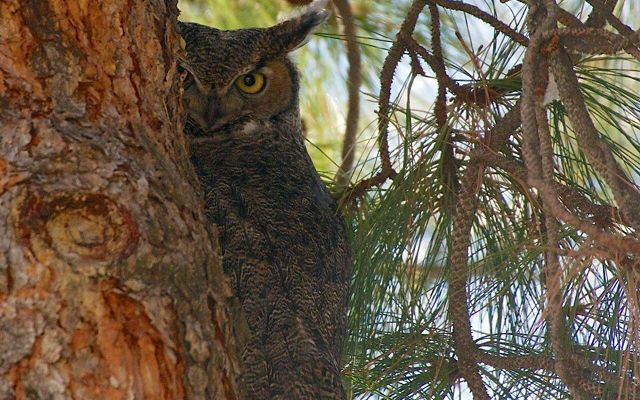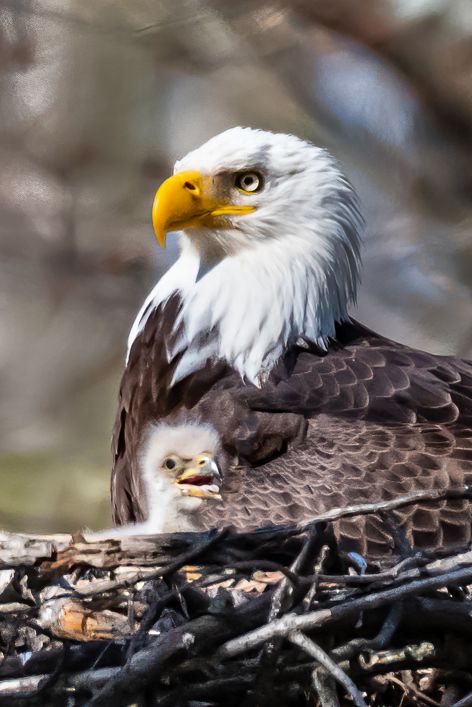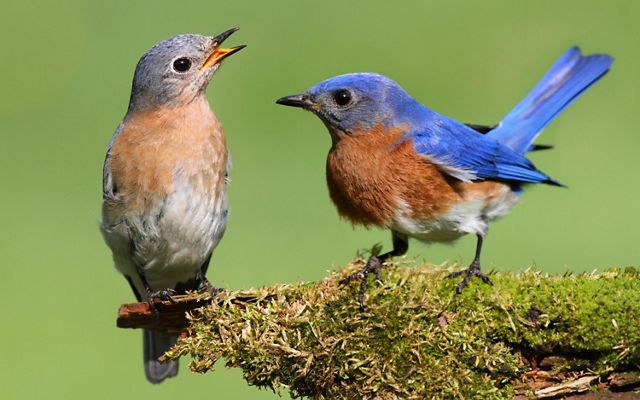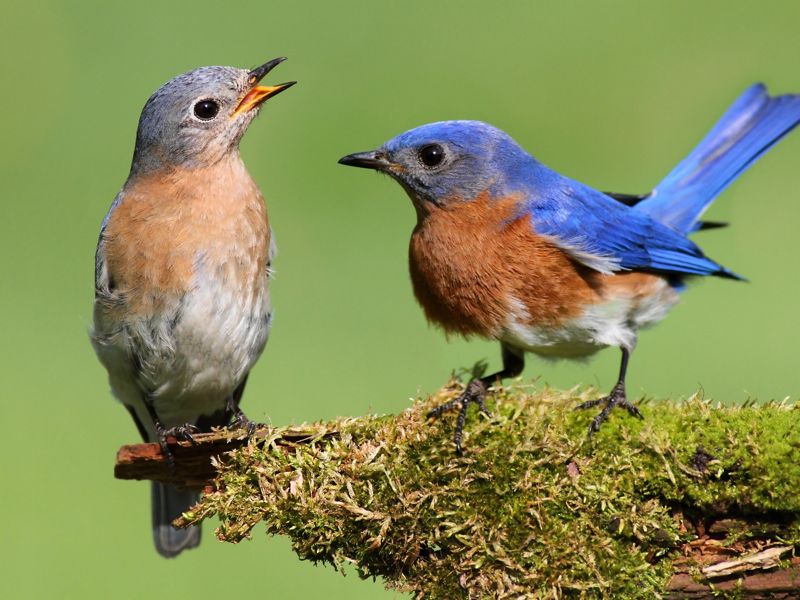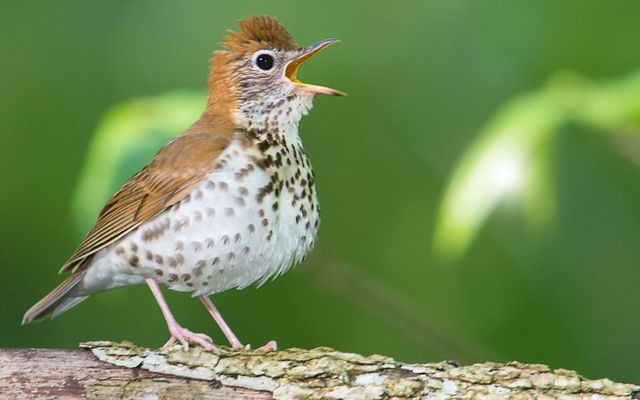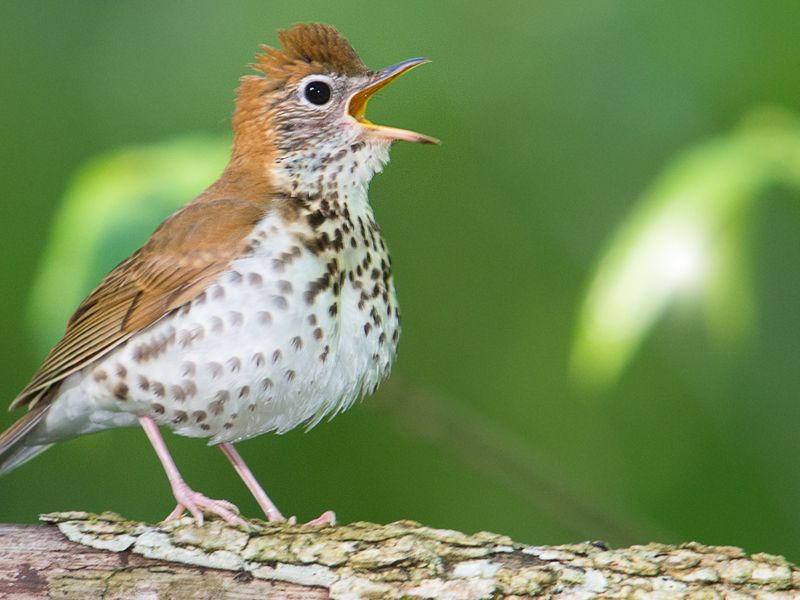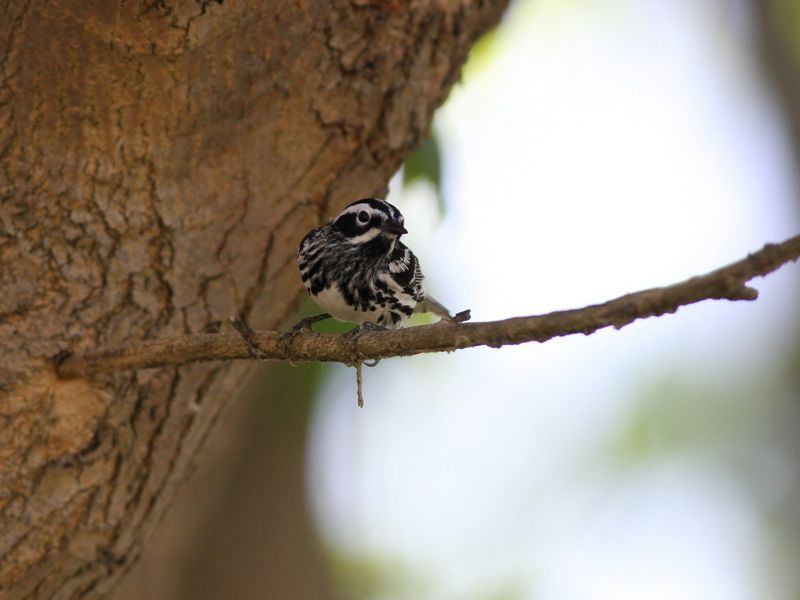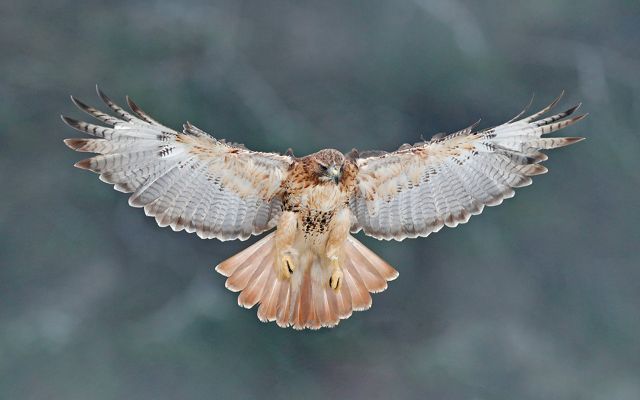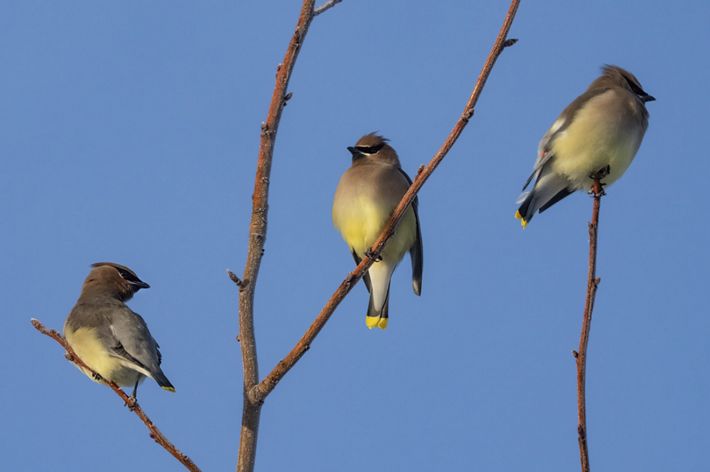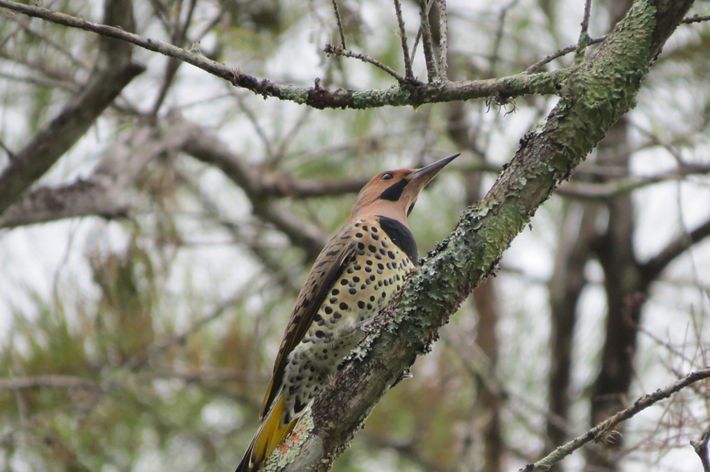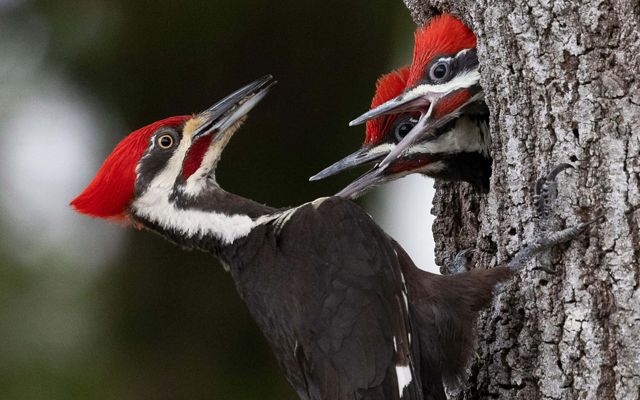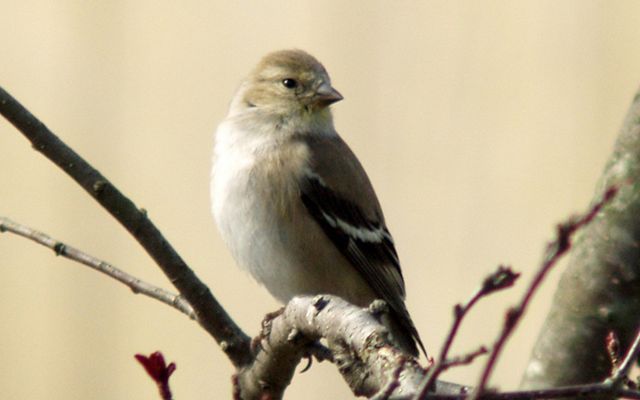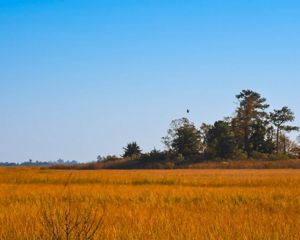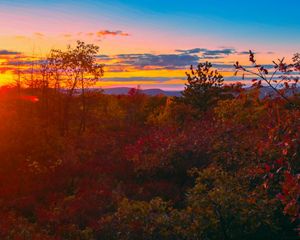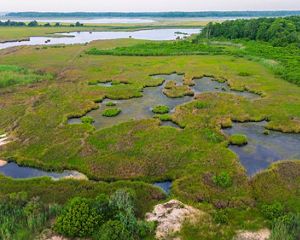
Where to bird watch in Pennsylvania & Delaware
PA & DE offer some of the best places for birding in the country. Learn about sites across both states to see unique birds.
Pennsylvania and Delaware offer some of the best places for bird watching in the country year-round. Pennsylvania’s densely wooded Appalachian forests and mountain ridges offer spectacular glimpses of hawks, ospreys, woodpeckers, warblers, owls, and many more species. Meanwhile, Delaware’s Bayshore ecosystems are a prime location for spotting a wide assortment of migratory songbirds, ducks, wading birds and shore birds, including the federally-threatened red knot which stops at the beaches each spring to feast on horseshoe crab eggs.
Birding is a fun, accessible recreational activity for people of all ages. Each season brings its own unique opportunities to see different kinds of birds. And you don’t even have to drive hours from the city to see all sorts of our feathered friends—plus, if you’re a beginner, birding groups are often easier to find in urban areas. Whether you’re a seasoned birdwatcher or just getting started, we welcome you to visit our public preserves and other outdoor recreation sites in Pennsylvania and Delaware throughout the year.
Spring Birding Locations
Spring is arguably the best time for bird watching in the Mid-Atlantic region when a wide variety of species are active building nests, searching for mates and raising their young. Some of the most colorful songbirds you’ll see all year long make their way north this time of year during their annual migration.
TNC's Hamer Woodlands at Cove Moutain
Marysville, PA: 20 minutes northwest of Harrisburg, PA. Free to visit; open year-round.
Cove Mountain Preserve is an amazing location for bird watching year round. In the spring you’ll be able to see raptors, like broad-winged hawks, flying north along the Kittatinny Ridge, a critical connected corridor in the Central Appalachians. You might also see a male scarlet tanager; their nearly fluorescent red plumage and black wings are unmistakable. Keep your ears on alert for the hoots of Great-horned owls. They aren’t usually active during the day but sometimes you’ll hear them calling, especially in the morning or evening hours, and you might see one perched high in a tree along the trails.
TNC recently partnered with Audubon Mid-Atlantic on a proactive restoration project due to the high value of improved ridgetop landscapes. Read more about the project.
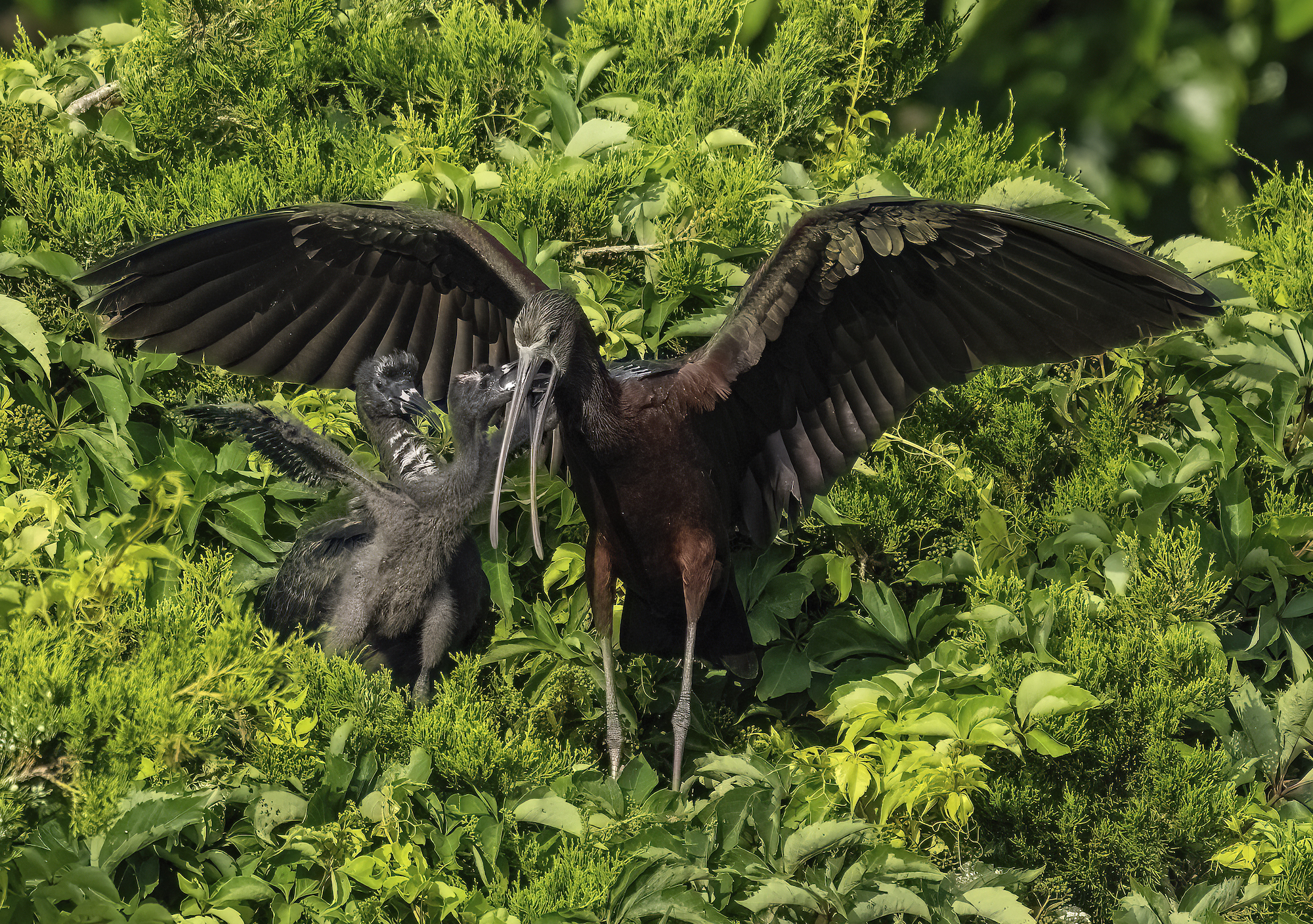
Prime Hook National Wildlife Refuge & Beach Plum Island Nature Preserve
Broadkill Beach, DE: 20 minutes northwest of Lewes, DE Prime Hook is free to visit; Beach Plum Island is part of the Delaware State Park System which charges a fee to visit from March 1 through November 30. Open year-round.
The trail system at Prime Hook National Wildlife Refuge is situated about a mile inland of the Delaware Bay and this refuge is most well-known for its extensive fresh and saltwater wetlands. In 2003, TNC transferred several tracts of lands totaling nearly 50 acres to the U.S. Fish & Wildlife Service to expand Prime Hook. The Refuge provides an important stopover site for migratory birds as they travel up and down the Atlantic Flyway. Three-hundred and eight bird species have been observed here!
Nearly 80% of the 10,000-acre preserve is comprised of fresh and salt water wetlands where you can see wading birds like Green herons and water fowl like Wood ducks. Spot colorful migratory songbirds like the Yellow warbler and the Common Yellowthroat in the spring and fall months. The Refuge’s bird brochure is available here.
Beach Plum Island is a scenic, ten-minute drive from Prime Hook through wetlands where you might see a glossy ibis probing the mud with its long bill as it searches for food. But the main draws at Beach Plum Island are the shore birds populating the sandy beaches of the Delaware Bay. The star of the spring migration here each year are the red knot, a stocky, medium-sized shorebird that stops briefly each May to feast on horseshoe crab eggs. The red knot is a federally threatened species that flies more than 9,300 miles from South America to the Arctic every spring—and repeat the trip in reverse every autumn—making this bird one of the longest-distance migrants in the animal kingdom. Also commonly found feasting alongside the red knots: ruddy turnstones and semipalmated sandpipers.

Prince Gallitzin State Park
Cambria County, PA: 25 minutes northwest of Altoona, PA. Free to visit: Open year-round
Prince Gallitzin State Park is a 6,249-acre state park in western-central Pennsylvania that features more than 32 miles of hiking trails and excellent birdwatching opportunities. TNC has recently partnered with the Bureau of State Parks to expand prescribed fire efforts on this critical Appalachian landscape. The 1,635-acre Glendale Lake, with its 26 miles of shoreline, is home to many species of ducks, herons and rails. During the spring and fall, waterfowl stop at the lake to rest on their migrations north and south. If you hike around the lake, look for belted kingfishers sitting in the trees along the water’s edge—you might hear them before you see them as their distinctive call alerts you to their presence.
The forests of the park are excellent for seeing many species of migratory songbirds, especially warblers and vireos, like the magnificent white-eyed vireo. A list of birds you can see at Prince Gallitzin State Park can be found here.
Springtime Events:
Save the date for these exciting birding events!
- National Go Birding Day
April
- World Migratory Bird Day
May and October
Summer Birding Locations
Though birds are not migrating in the summer months, this season is still an excellent time to grab your binoculars and head outside. Many birds use the summer months to rest in the shade and replace their feathers, so be sure to grab your water bottles and keep a close eye on the tree branches.
TNC's Edward H. McCabe Preserve
Milton, DE: 20 minutes northwest of Lewes, DE. Free to visit; open year-round.
The Edward H McCabe Preserve is a 143-acre preserve featuring hiking trails and a wide variety of habitats, including open fields, woodlands of various ages as well as tidal marshes and riverine ecosystems. Visitors can access this preserve by canoe or kayak from the town of Milton via the Broadkill River.
Over 100 bird species have been observed here, including a pair of bald eagles that have been nested nearby in recent years making them a common sight from the canoe dock and picnic table. Osprey are also common, hunting for fish and carrying them in their talons back to their nest for their hungry young. As you hike, you may spot a wood thrush hopping around the forest floor searching for insects under the gaze of eastern bluebirds perched on the tips of tree branches along the edge of the fields.
Birding Checklist
Take a look at the full birding checklist for the McCabe Preserve
See the Checklist
John Heinz Urban National Wildlife Refuge at Tinicum
Philadelphia, PA: 5 minutes from Philadelphia International Airport. Free to visit; open year-round.
Established as the first urban wildlife refuge in in America in 1972, the refuge features more than 10 miles of trails, including the popular 3.5-mile Wetland Loop. The Big Boardwalk Loop is less than 1 mile and is wheelchair accessible—both trails are excellent for birding. Most days, it’s not a question of if you will see a great blue heron but how many. Keep your eyes peeled for the American coot—a plump, black chickenlike bird with a rounded head and a white sloping bill—and the Baltimore oriole with its trademark orange breast. Check out the refuge’s calendar of events to find various birding events offered throughout the year.
Fall Birding Locations
The change into the fall season brings along a busy time for birds as they begin their seasonal migrations southbound to prepare for the cold. Local birding hot spots become dynamic locations for hearing and identifying a slew of bird species during this critical migratory time.
TNC's Dick & Nancy Eales Preserve at Moosic Mountain
Jessup, PA: 15 mintues east of Scanton, PA. Free to visit; open year-round.
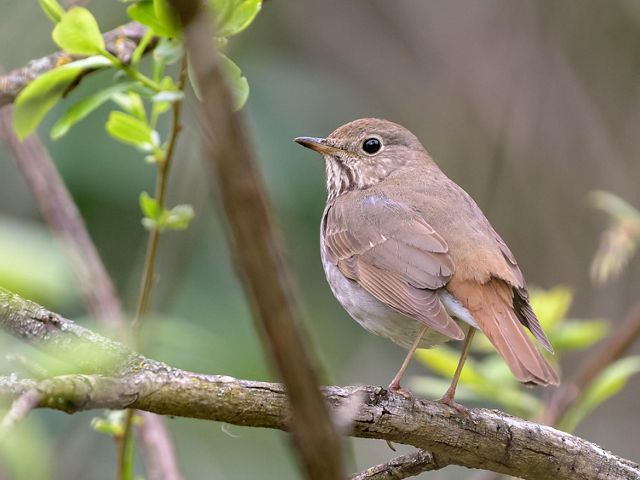
The Dick and Nancy Eales Preserve at Moosic Mountain is one of TNC’s most-visited preserves in Pennsylvania. Visitors can enjoy miles of hiking trails and mountain bike access, as well as incredible mountaintop views and excellent options for birdwatching, especially during the fall and spring migrations of songbirds and raptors. An array of ecosystems can be found across the 2,250-acre preserve including mature forest and ridgetop heath barrens which are comprised of a healthy mosaic of pine and oak forest dominated by huckleberry, blueberry, rhodora and other low-lying shrubs that attract a broad array of birds, butterflies and moths.
The small, zebra-striped black and white warbler breeds in Pennsylvania's forests each summer and spends its winters as far south as Colombia and Venezuela. You may see it creeping along branches searching for insects but are more likely to hear its very high-pitched two-note song, which some describe as a squeaky wheel.
With its flute-like song, the hermit thrush has been lauded by Walt Whitman and is, to many, the voice of Moosic Mountain. After a long journey from its wintering grounds in the southern United States and south to Central America, the hermit thrush breeds and forages for insects and berries in northeast Pennsylvania's forests. And every autumn, hundreds of thousands of broad-winged hawks depart the forests of North America for their winter grounds in South America. They fill the sky in sometimes huge flocks—called kettles—that can contain thousands of birds at a time

First State National Historical Park, Brandywine Valley Unit
Wilmington, Delaware. Free to visit; open year-round
The park features more than 20 miles of hiking trails across more than 1,300 acres of rolling agricultural fields, pastures, forested hills, and streams that showcase the natural and cultural legacy of the larger Brandywine Valley in northern Delaware and southern Pennsylvania. According to the National Park Service (NPS), “105 species of birds have been identified, however, there are probably many more species of birds that have not yet been confirmed.” TNC has been partnering with the NPS since 2016 when our community-science Stream Stewards program volunteers first began tracking water quality in the streams that run through the park.
If you listen for the call of the ruby-throated hummingbird you’ll hear these tiny birds more than you may see them. Both the males and females feature a dazzling emerald-green coat, but only the males have the namesake ruby-red throat. Look for these birds foraging for nectar among wildflowers or searching for insects as they fatten up before their long flights back to Mexico and Central America.
As you walk through the woods, look up into the trees for holes and nooks where the eastern screech owl might be roosting for the day. These small owls are well camouflaged so your best chance of seeing one may be to listen for the noisy commotion of songbirds mobbing an owl they have found. If you look closely at tree cavities and nesting boxes, especially on cold sunny days, you may see a screech owl sunning itself sleepily.
Falltime Event:
Save the date for these exciting birding events!
- International Hawk Migration Week
September - Philly Birding Week
October - Birdability Week
October
Winter Birding Locations
Though winter does not seem like the obvious season for birding, the colder months bring a unique birding experience. Winter offers the perfect opportunity to spot various kinds of woodpecker and waterfowl species. So be sure to grab your warm layers and head out to explore.
Long Pond Preserve and Hauser Nature Center
Long Pond, Pennsylvania. Free to visit; open year-round.
The Nature Conservancy’s Long Pond Preserve complex in western Monroe County, Pennsylvania, includes the Hauser Nature Center and the nearby Long Pond Barrens. Situated along the southeastern edge of the Pocono plateau, the preserve is one of Audubon Society’s Important Bird Areas of Pennsylvania and contains a wide variety of wildlife habitats including bogs, swamps, barrens, oak forest, boreal forest and northern hardwood forest.
In winter, you have a good chance to spy the uniquely patterned northern flicker, which has a black polka-dotted breast and red on its face. Unlike most woodpeckers that you’ll find high up in a tree, the Northern flicker is often found closer to the ground. You’ll also see cedar waxwings feasting on dried berries and fruits in the winter. These unique birds have a silky, shiny appearance of brown, gray and yellow, accented with a subdued crest, a black mask and red on the wing feathers.
Ponders Tract at Pemberton Forest Preserve
Milton, DE: 40 minutes south of Dover, DE. Free to visit: Open year-round.
When TNC acquired Ponders Tract in 2004, it was a former pine plantation lacking in biodiversity. Today, after years of forest restoration efforts including prescribed burning, a more natural, mixed hardwood forest is returning. This preserve features 9 miles of trails over mostly flat and sandy terrain making it accessible to all.
Pileated woodpeckers, America’s largest woodpecker species, stays around for the winter and is known to search trees and logs in search of insects. With a distinct call and a unique flight pattern, this species is hard to miss.
Wintertime Events:
Save the date for these exciting birding events!
- Audubon’s Christmas Bird Count
December - January - Great Backyard Bird Count
February
More Places to Bird Watch
Our public preserves in Pennsylvania & Delaware are excellent hot spots for birding. Plan your visits to explore these locations.
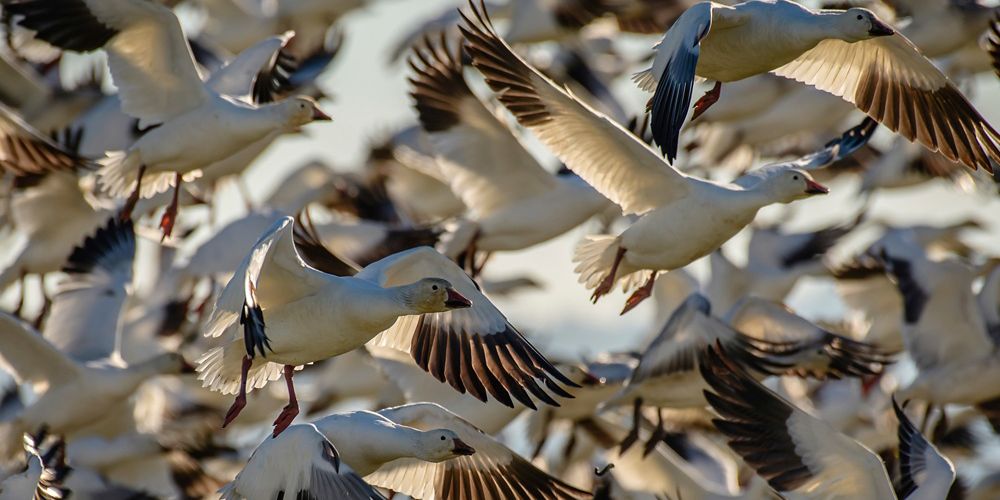
Birding Resources & Groups
Birding Apps for Smartphones:
-
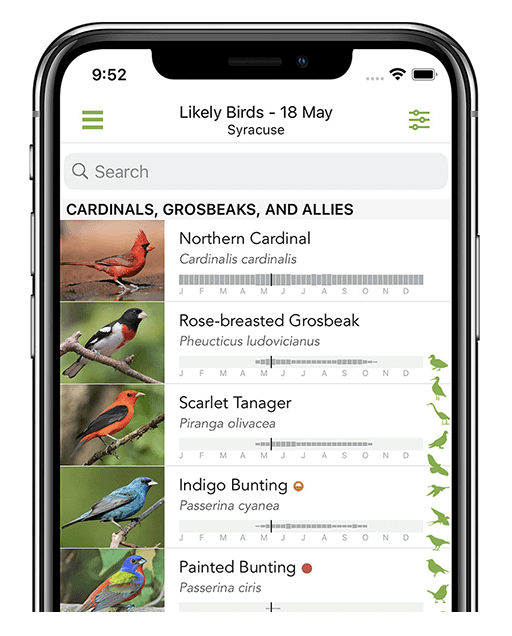
Merlin
Identify the birds you see or hear with Merlin Bird ID. Free global bird guide with photos, sounds, maps, and more. Learn More
-
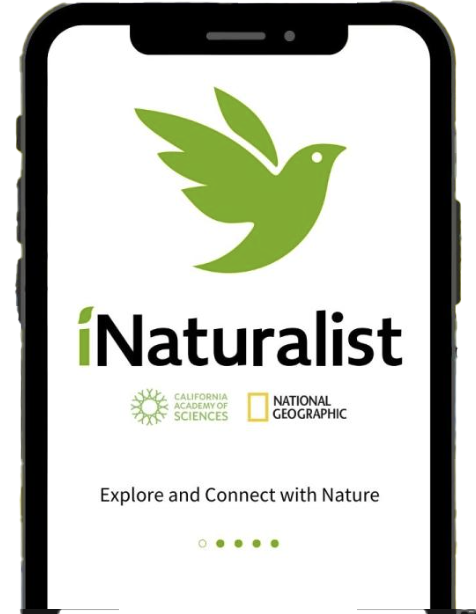
iNaturalist
Log your bird sightings (along with other wildlife and plants) and get help from a community of scientists and experts who can identify any unknown birds you observe. Learn More
Delaware Birding Groups
Stay in Touch
Sign up to receive monthly e-mail conservation news & updates from your state.
